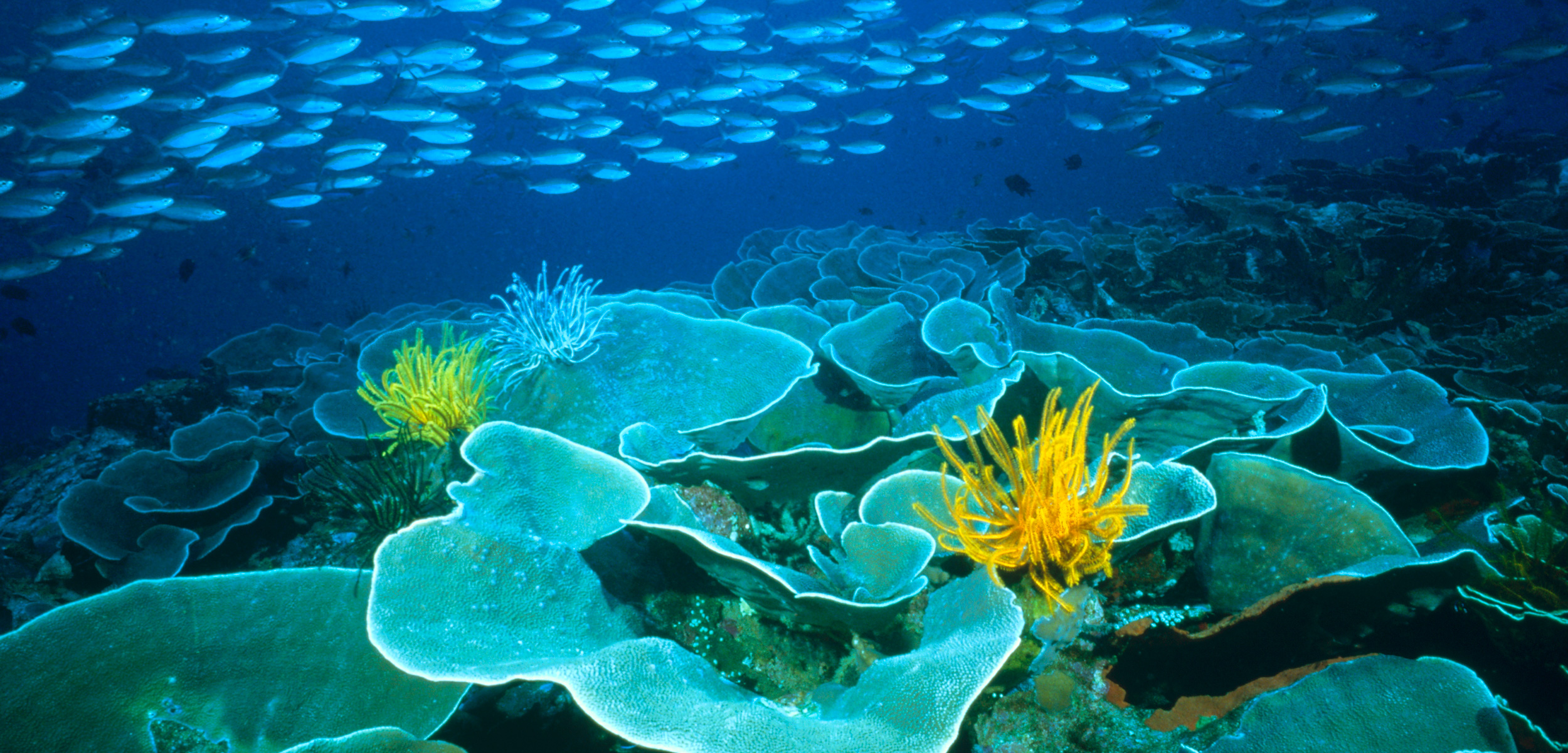Even Corals Have Microbiomes
Warming and acidification affect different coral species’ microbiomes in diverse ways.
Article body copy
Though they look like rocks, corals are actually living organisms. Or, more accurately, communities of organisms. Each coral lives in symbiosis with the algae that resides inside it. But according to biologist Andréa Grottoli, corals are more complicated than this, and the relationship is actually more of a ménage à trois. There’s the coral, the algae, and the coral’s microbiome.
“I started thinking about the coral as a three-way symbiosis,” says Grottoli, who studies coral at Ohio State University. And as her research has recently shown, coral microbiomes can vary between species. These differences may explain why some corals seem more resilient to climate change than others.
In her research, Grottoli and her team traveled to northwestern Fiji, where they harvested samples of two coral species, Acropora millepora and Turbinaria reniformis. They took the corals back to a lab in Ohio, and exposed them to seawater set at the temperature and acidity level forecast for the end of the century given ongoing climate change. Samples of each coral were also kept in control tanks maintained at current Fiji conditions.
In the experiment, Grottoli found that Acropora coral suffered more because of the stress of heat and acidification than the Turbinaria. They experienced physiological decline, and while they survived the experiment, they also began to pale, suggesting they had started to bleach. But it wasn’t just the Acropora coral that suffered—their microbiomes did, too. Compared to the corals living in controlled Fijian conditions, the number of unique types of bacteria living on the test corals went down 40 percent, Grottoli says. The overall composition of bacteria species changed as well.
So while the Acropora that suffered had reduced microbial diversity, the Turbinaria, which held up better to the warming and acidification, also had more resilient microbial communities.
“What we don’t really know is who is driving the bus,” Grotolli admits. How the coral, algae, and microbes work together is uncertain. The discovery adds yet another layer of complexity to the already difficult task of figuring out how to protect coral from climate change.
“It’s sort of like with humans,” says coral biologist Anastazia Banaszak of the National Autonomous University of Mexico, who was not involved in the study. “If you get sick and you can maintain all your bacteria in your stomach, then you do okay—you can get through it pretty well.” If your illness wipes out your gut microbiome, however, you might suffer more. This study suggests that a coral’s microbiome likewise plays a role in buffering its response to the stresses of climate change, Banaszak says.
While some conservationists have speculated that identifying the most robust corals could be useful for genetically engineering more thermally tolerant reefs, or that corals should be transplanted onto reefs most at risk for bleaching, Grottoli doesn’t think those solutions will work in the long run.
“The only solution to saving reefs on a global scale, as best we can, is to reduce carbon dioxide emissions. Even slowing CO2 emissions would go a long way, because it gives corals more time to adapt or acclimate,” she says. “That’s the only viable option at this time.”

